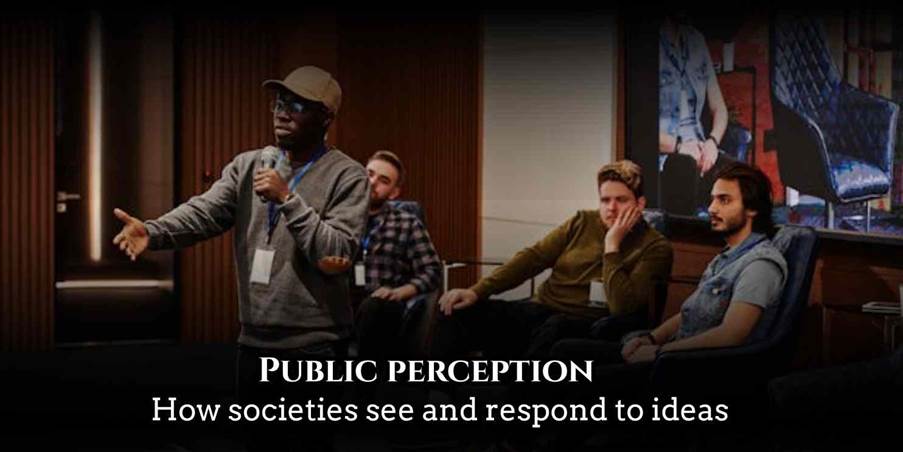Public perception shapes how communities respond to events, leaders, brands, and policies. It combines public opinion, media influence, and societal attitudes to form a shared view that affects decision making, trust, and behavior. This article will unpack what public perception means, how it forms, why it matters for organizations and governments, and practical ways to measure and influence it ethically. We will cover the role of media representation, the psychology behind perception shaping, examples of shifting community views, challenges like misinformation, and communication strategies that build credibility and improve public awareness. By the end, you will have clear, actionable ideas for analyzing and engaging with public perception in your field.
Table of Contents

What is public perception?
Definition and components
Public perception is the aggregate of individual beliefs and feelings about a topic, shaped by media influence, interpersonal communication, and personal experience. It includes measurable elements like polls and qualitative cues such as audience perception and cultural narratives. Key components are:
• Information framing that emphasizes certain facts
• Media representation that sets the tone for debate
• Social influence that amplifies opinions through networks
How perception forms
Perception forms through exposure and repetition. News coverage, social media trends, and opinion leaders guide opinion formation. Psychological processes such as confirmation bias and framing effects determine which messages stick and which fade.
Why public perception matters
Social and political impact
Public perception drives voting patterns, policy acceptance, and public trust. Public trust in institutions often depends on consistent messaging and transparent actions. When perception aligns with facts, governance and community cooperation improve. Mismatches lead to resistance and conflict.
Organizational and brand consequences
For companies and nonprofits, public image and brand perception influence customer behavior and support. Reputation management and crisis communication hinge on monitoring audience response and adapting strategies to restore confidence.
The role of media and communication
Media influence and narrative framing
Media outlets and social platforms are powerful in perception shaping. Choices about headlines, visuals, and context create narratives that guide public sentiment. Narrative framing can highlight or downplay aspects of a story, affecting emotional reactions and policy debates.
Social media impact and mass perception
Social networks accelerate opinion trends and enable rapid spread of ideas. Social media impact is double edged: it democratizes voices but can amplify misinformation. Understanding social influence patterns helps communicators engage audiences responsibly.
Perception psychology and audience response
Cognitive and emotional drivers
People form opinions through a mix of reasoning and emotion. Perception psychology shows that emotions like fear or hope alter risk assessment and policy preferences. Cultural norms and social beliefs guide how messages are interpreted.
Community perception and cultural context
Local context matters. Community perception varies by history, economic conditions, and cultural perception. Tailoring messages to local values and using trusted messengers improves resonance and credibility.

Measuring and analyzing public perception
Qualitative and quantitative tools
Effective perception analysis uses both data types. Tools include:
• Surveys and polls to measure public sentiment
• Social listening to track audience perception and opinion trends
• Focus groups to explore perception of leadership and messaging nuances
Perception analysis in practice
Combine metrics to identify misalignments between intended messages and public understanding. Use testing to refine narratives and measure change over time.
Strategies to influence public perception ethically
Build trust through transparency
Transparency and consistency strengthen public trust. Share evidence, admit uncertainty, and correct errors promptly to counter distrust and improve reputation management.
Frame information thoughtfully
Use clear, honest framing to shape public awareness without manipulation. Emphasize solutions and shared values to foster constructive dialogue and reduce polarization.
Engage communities and influencers
Partner with local leaders and credible voices to enhance reach. Community engagement improves community views and ensures messages reflect lived realities.
Challenges and limitations
Misinformation and polarization
Misinformation distorts collective opinion and complicates perception management. Polarized audiences filter messages through identity lenses, making attitude change slower.
Ethical boundaries
Influencing perception carries ethical responsibilities. Avoid manipulative tactics, prioritize accuracy, and respect diverse perspectives when designing communication strategy.
Conclusion
Public perception is a powerful force that shapes politics, commerce, and social life. Understanding how media representation, opinion formation, and cultural contexts interact helps organizations and leaders communicate more effectively. Ethical strategies that combine transparency, thoughtful framing, and community engagement can improve public understanding and strengthen public trust. Use surveys, social listening, and perception analysis to guide actions and measure progress. Stay attentive to changing audience perception and commit to open dialogue because sustained credibility depends on being both heard and trusted. Learn more about perception research and apply these approaches to build meaningful connections with your audience.